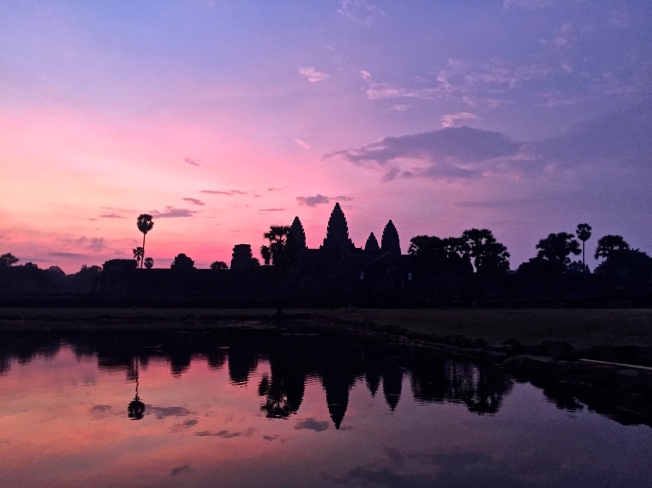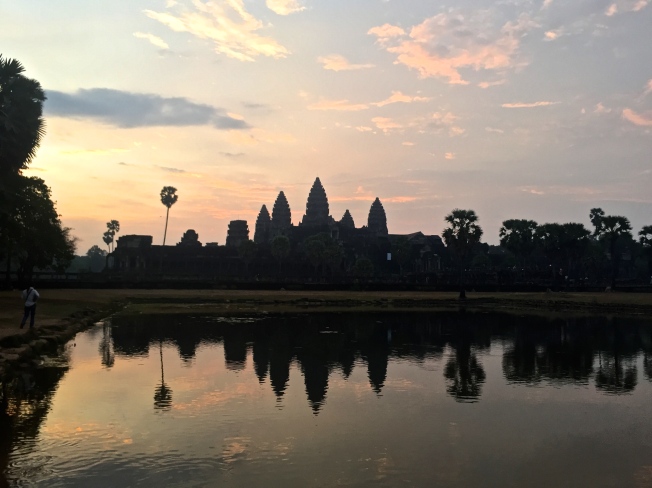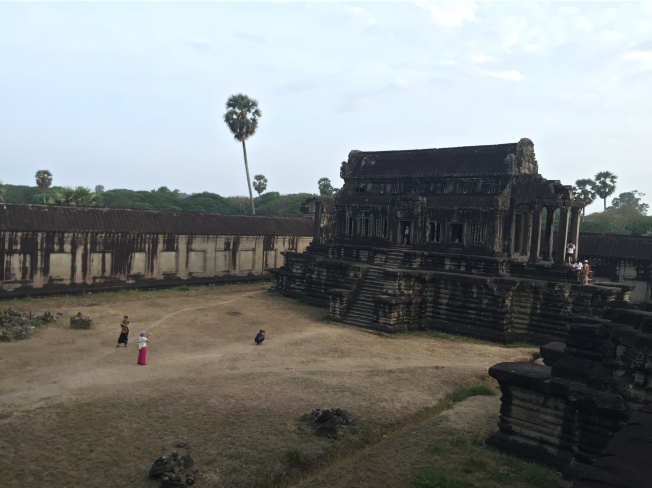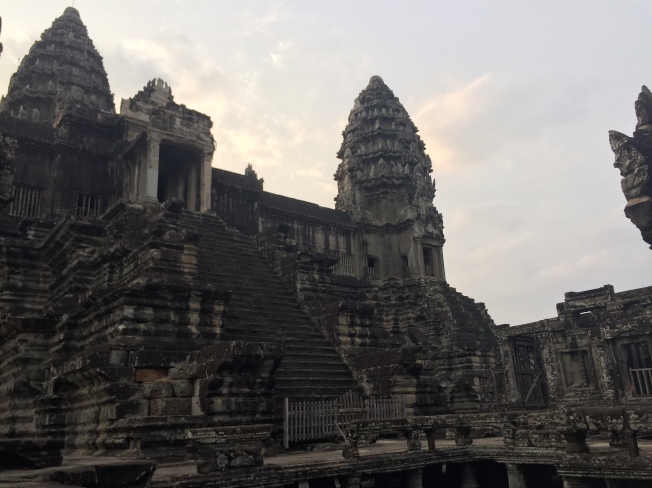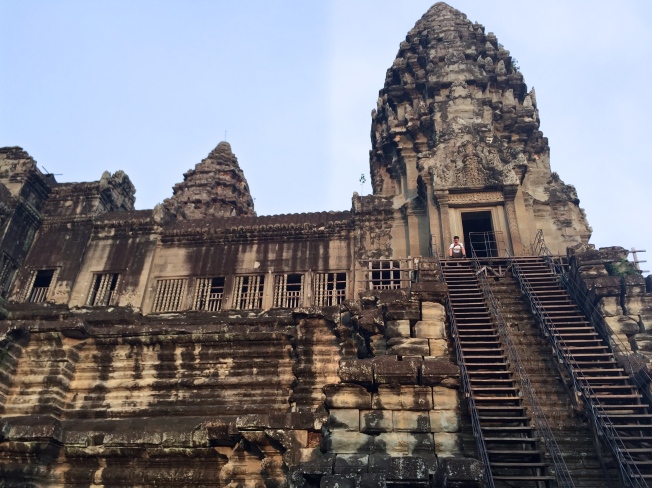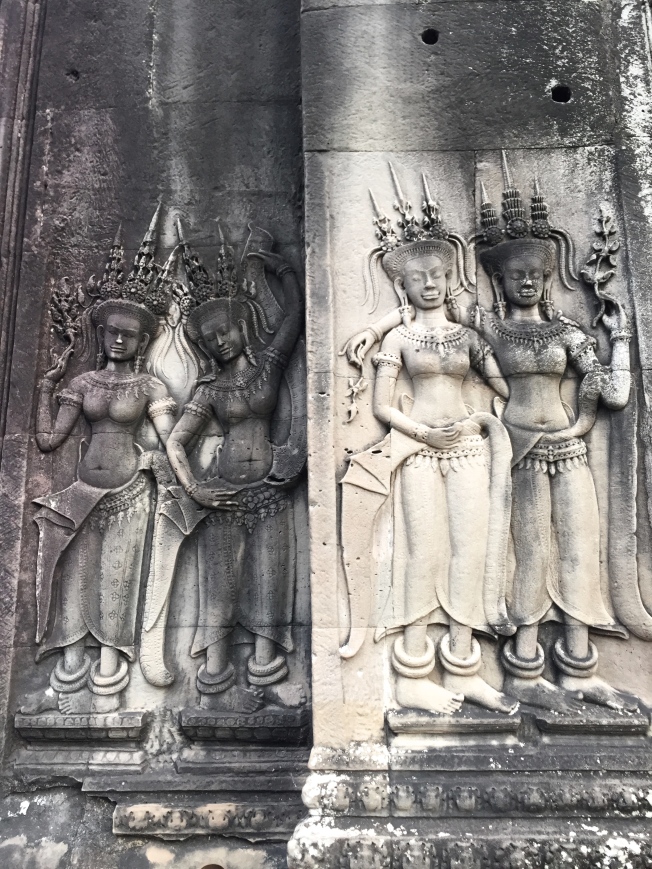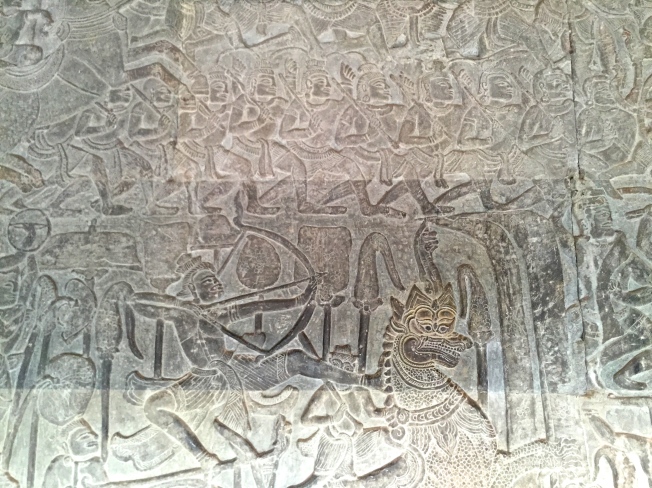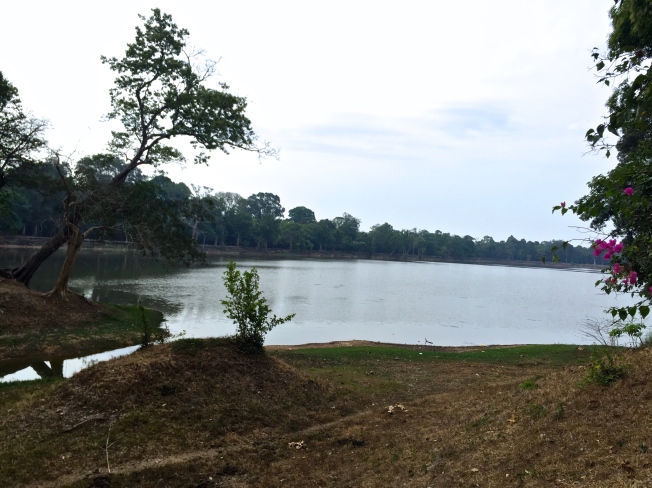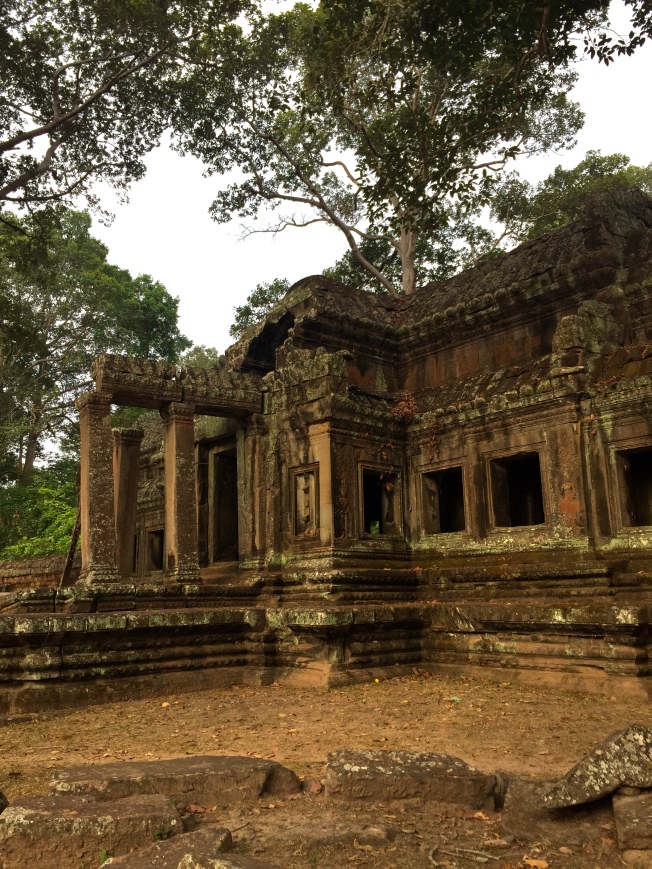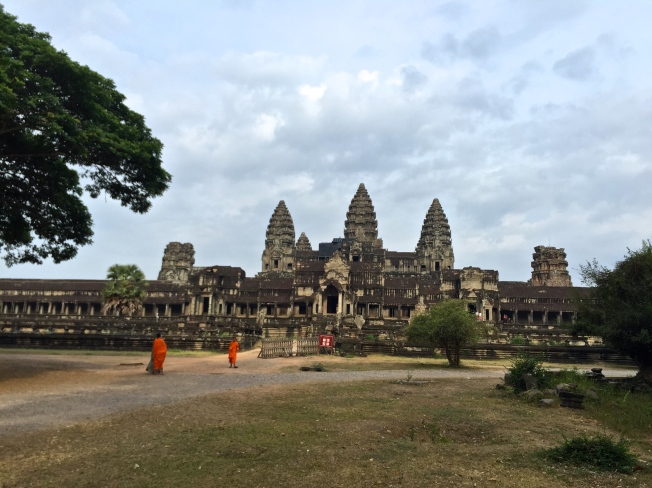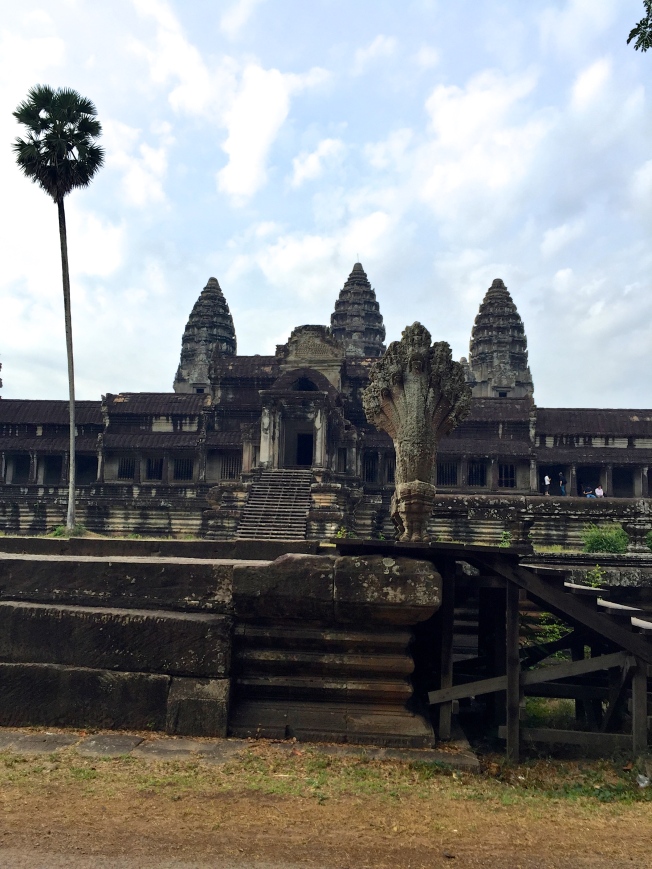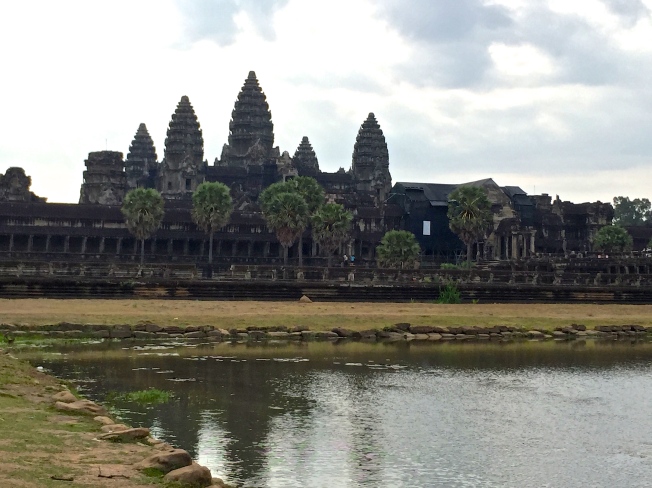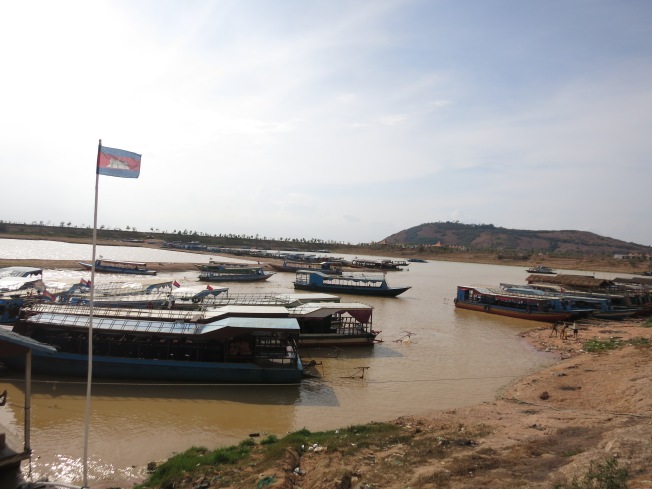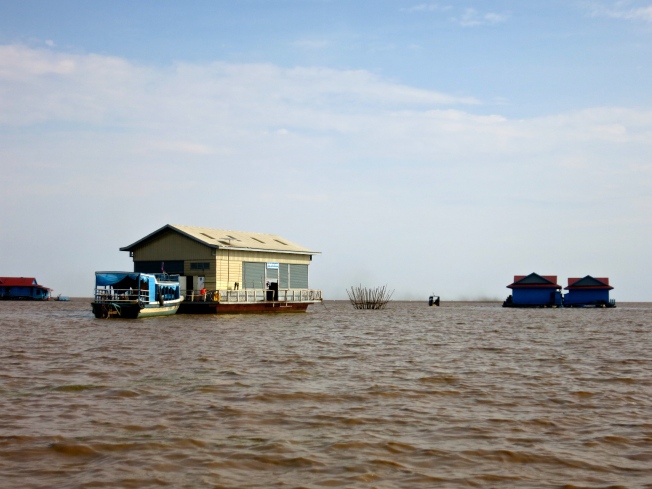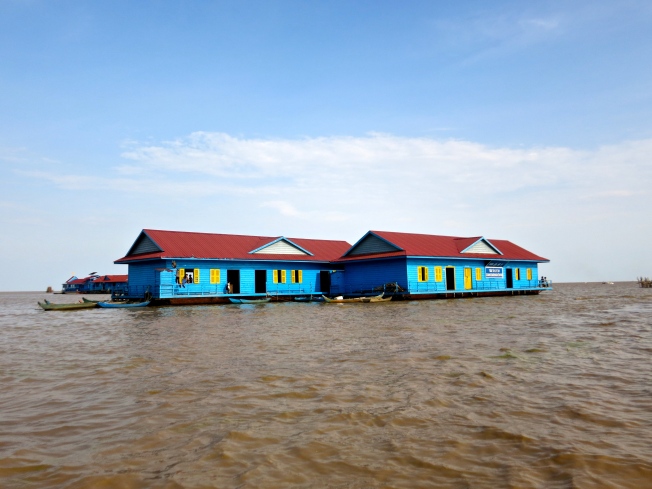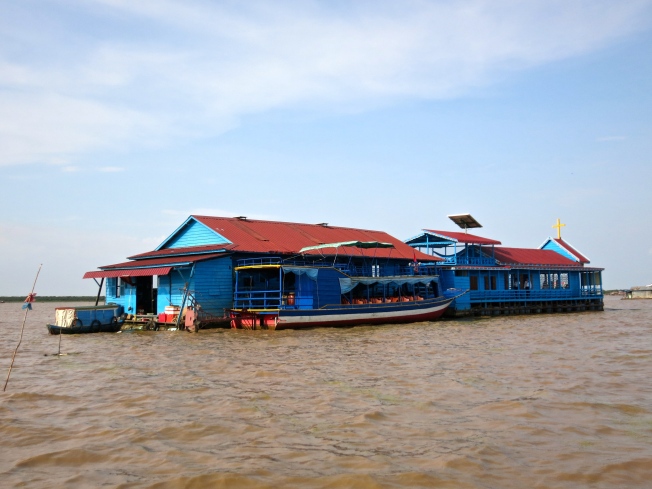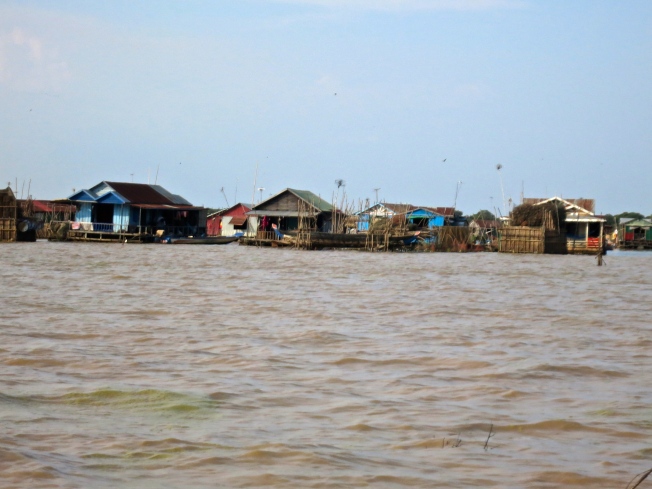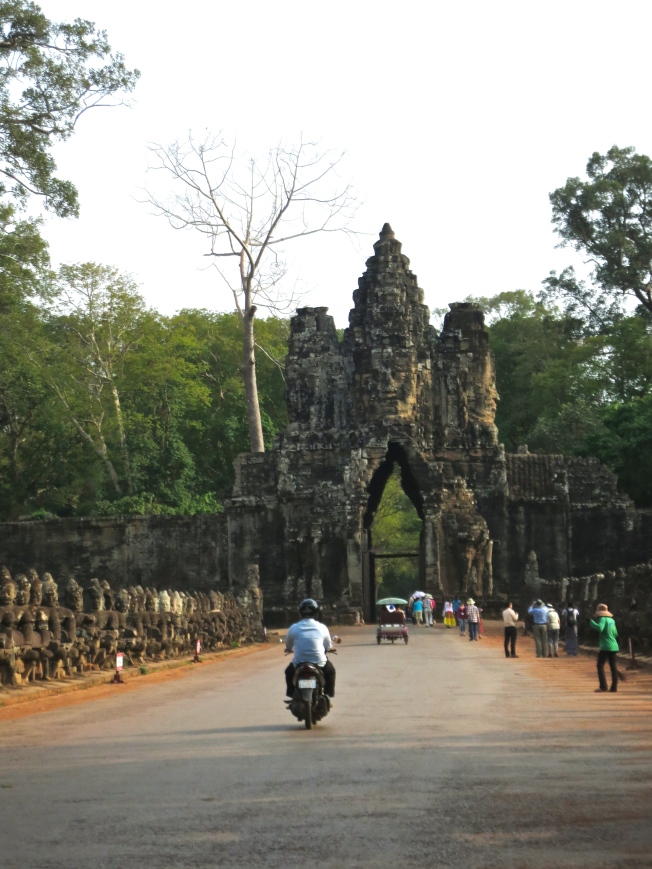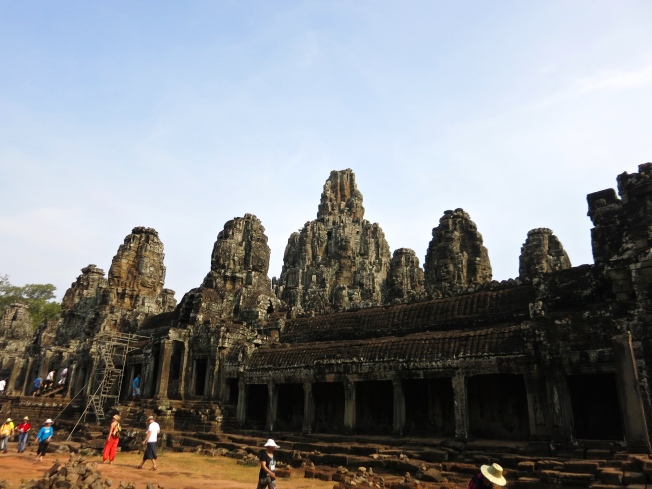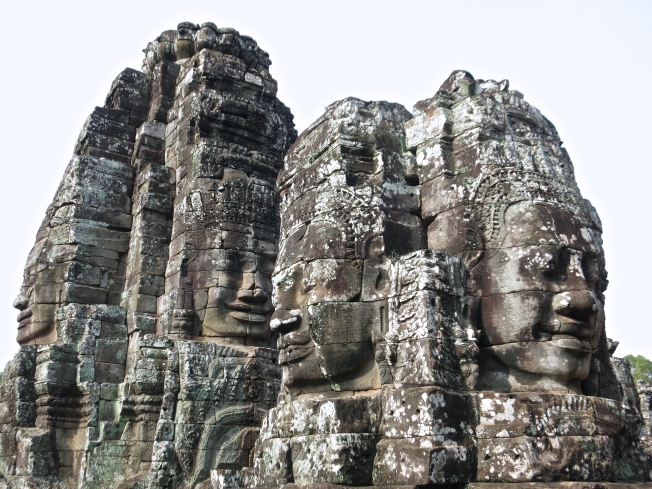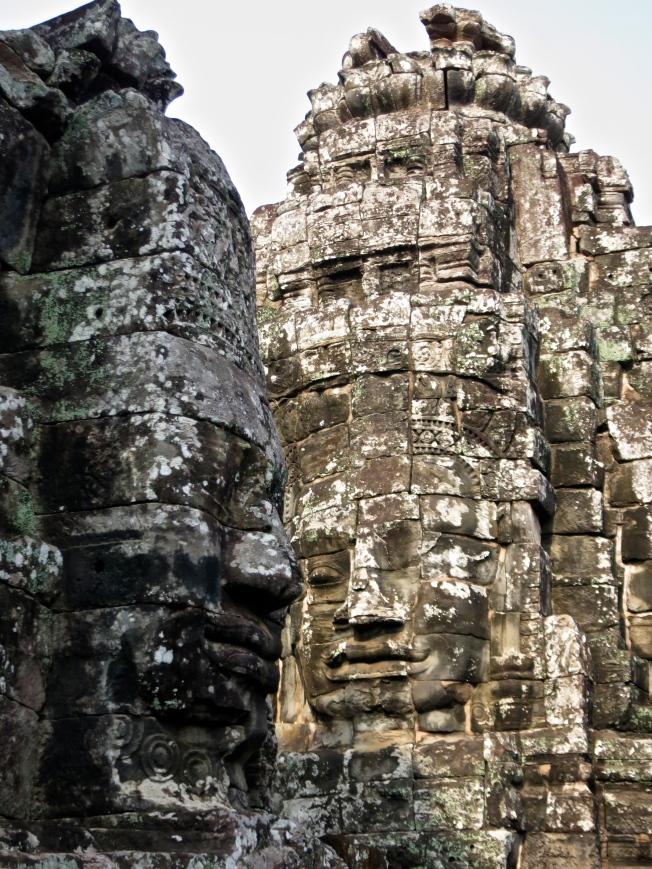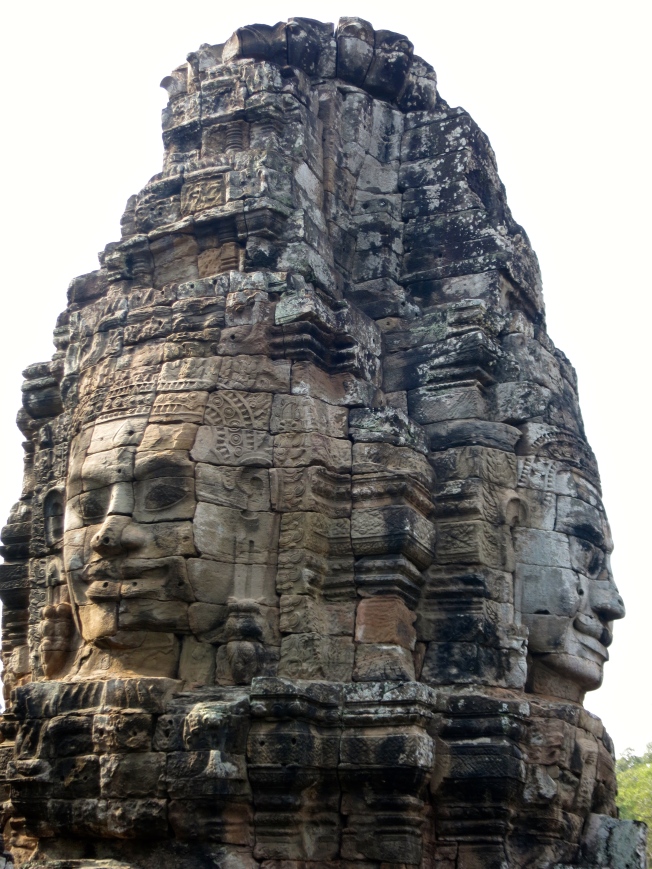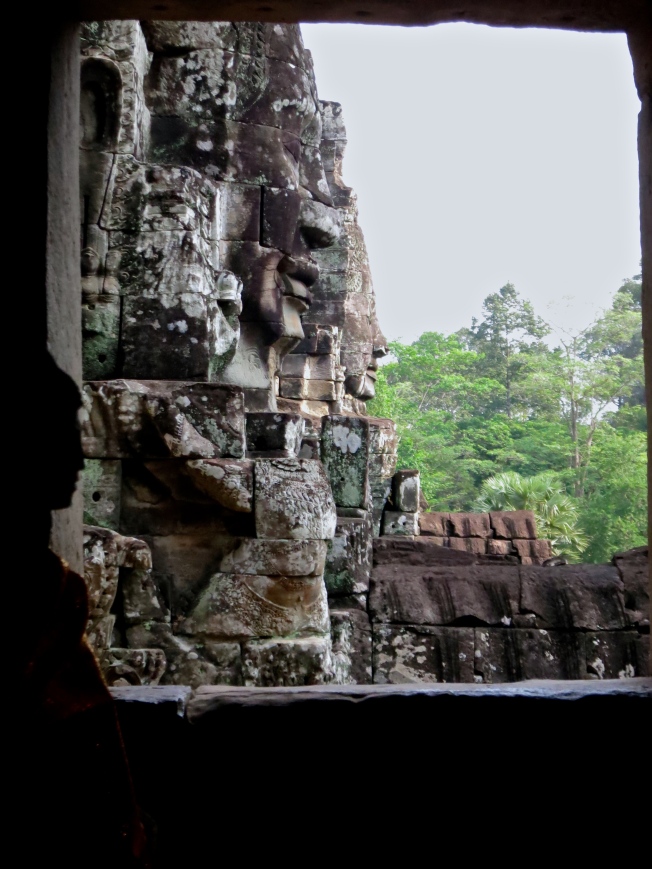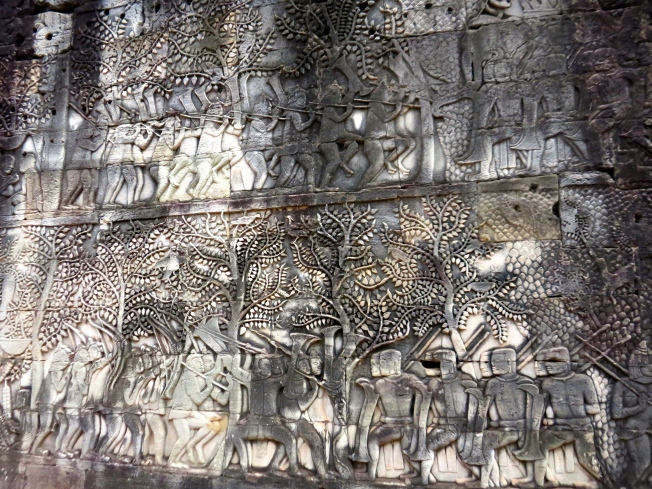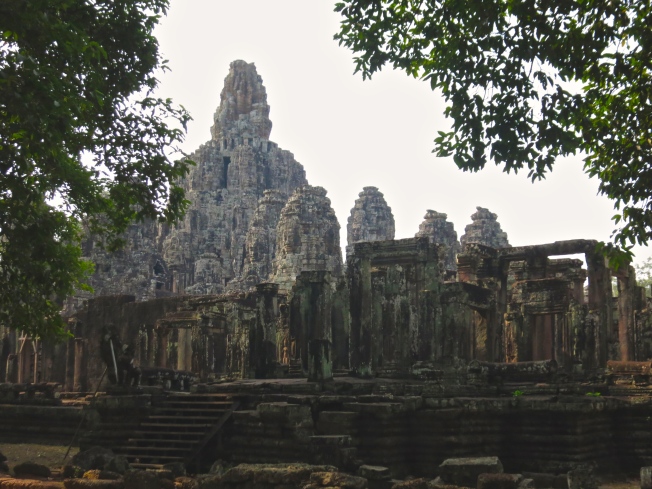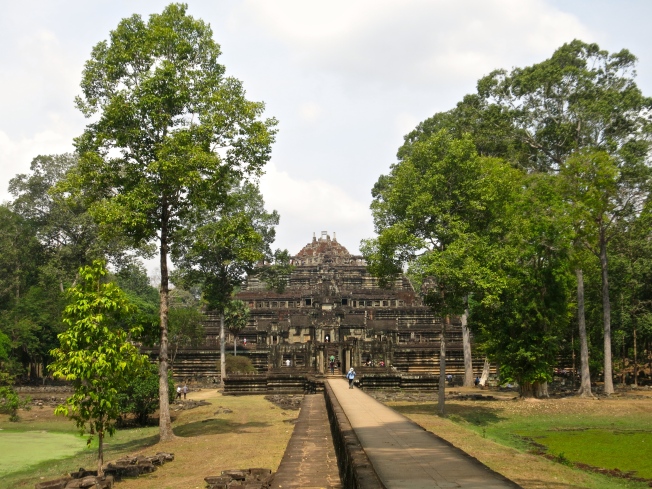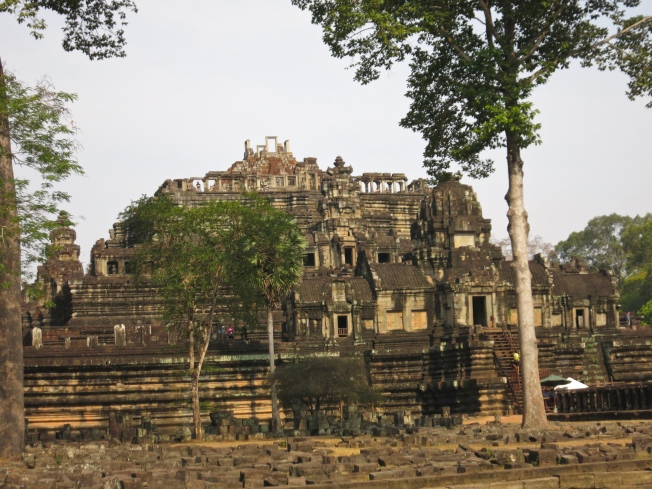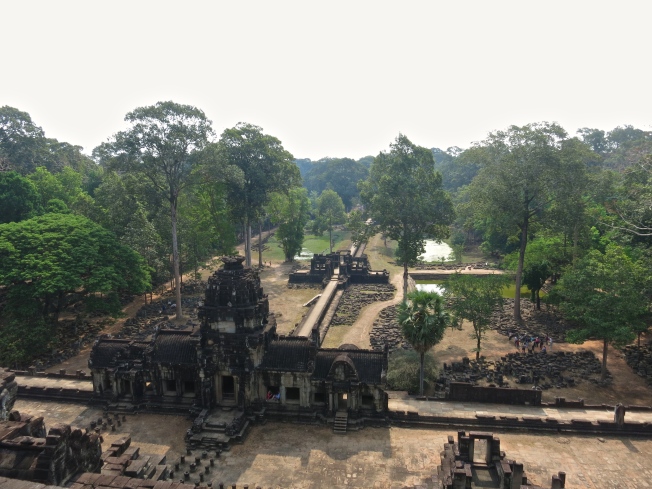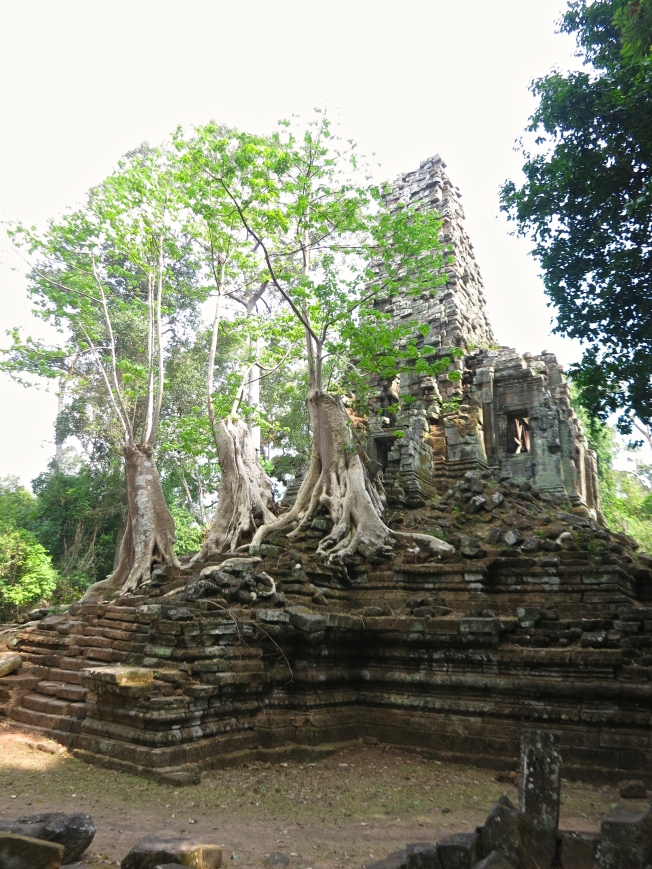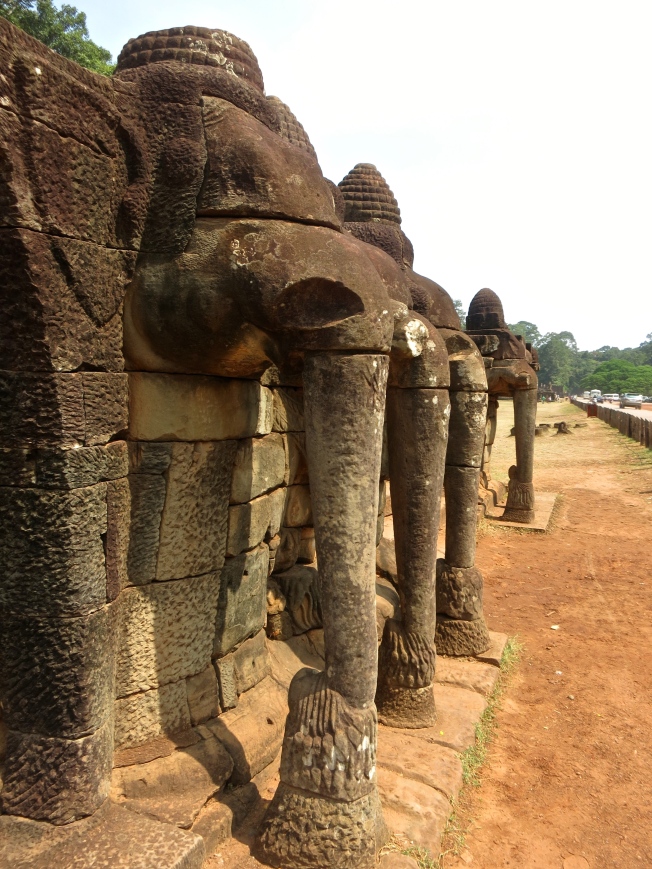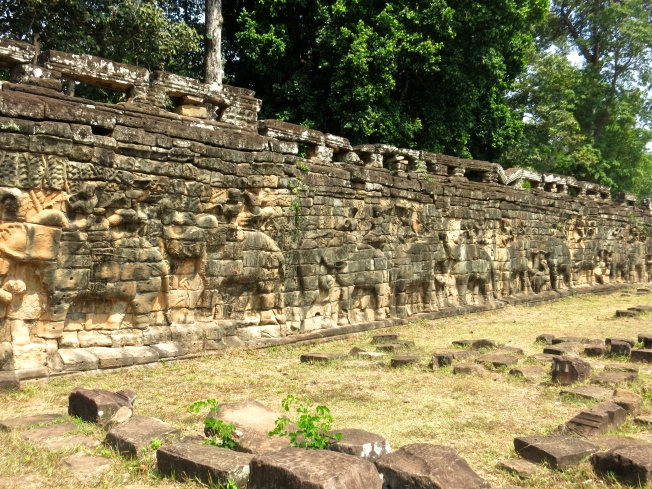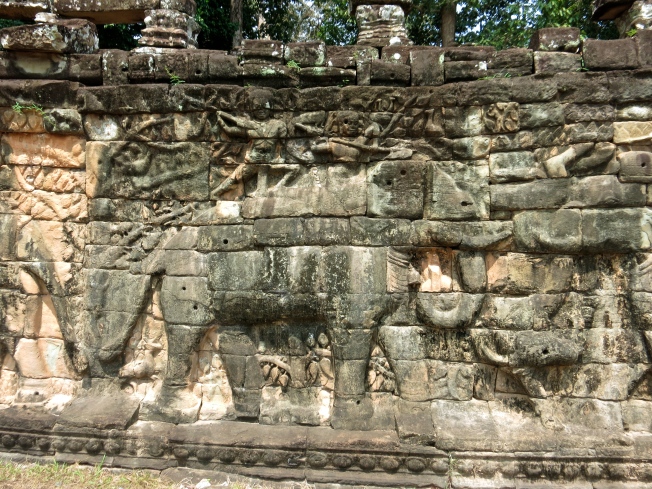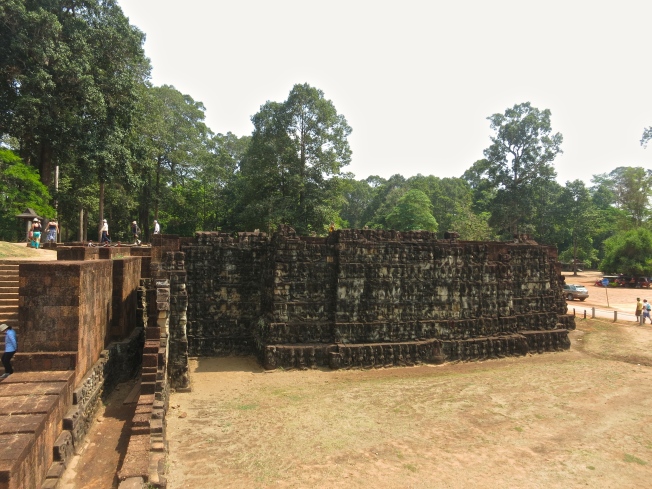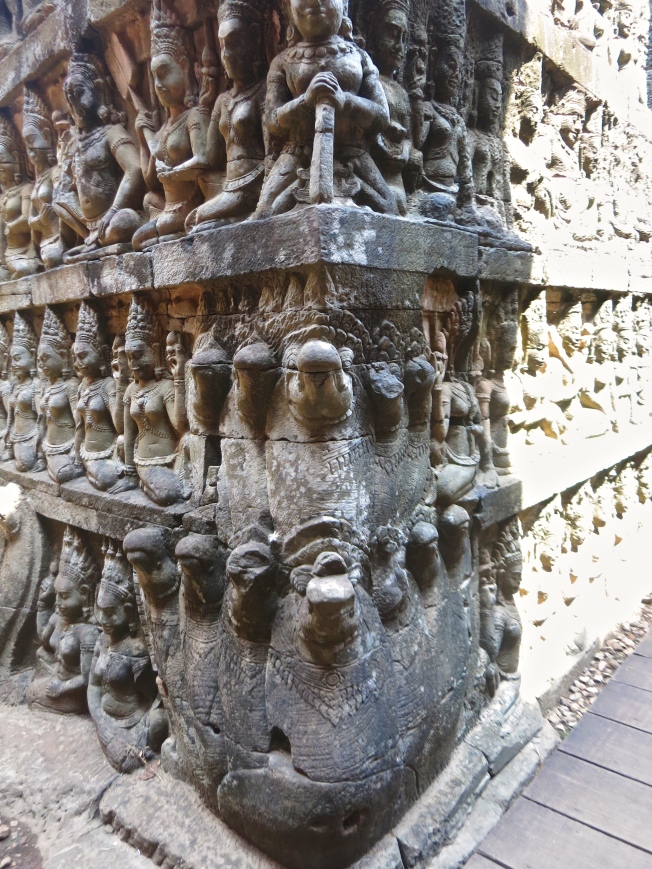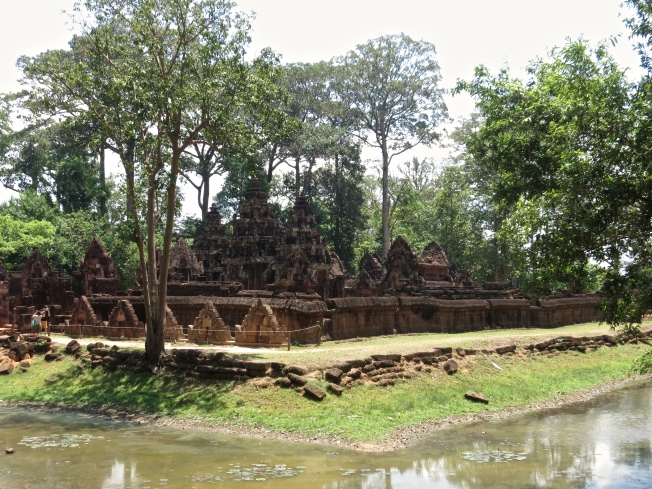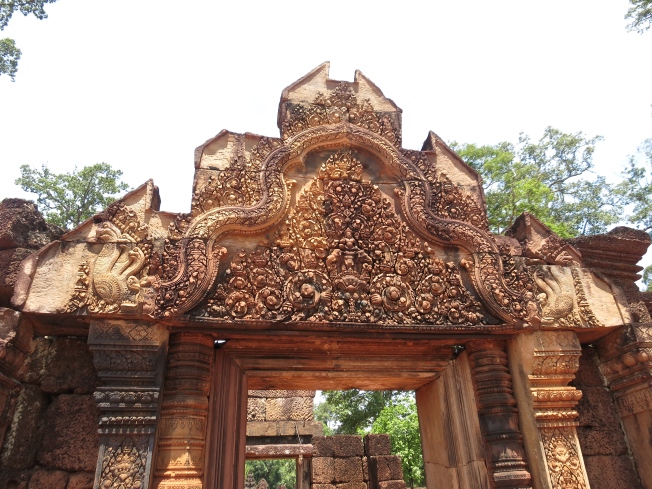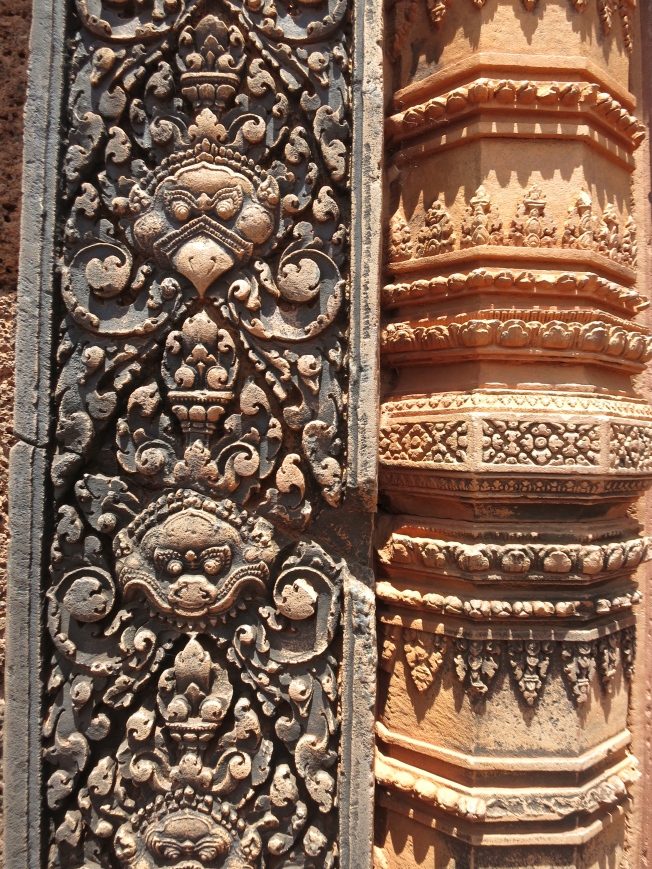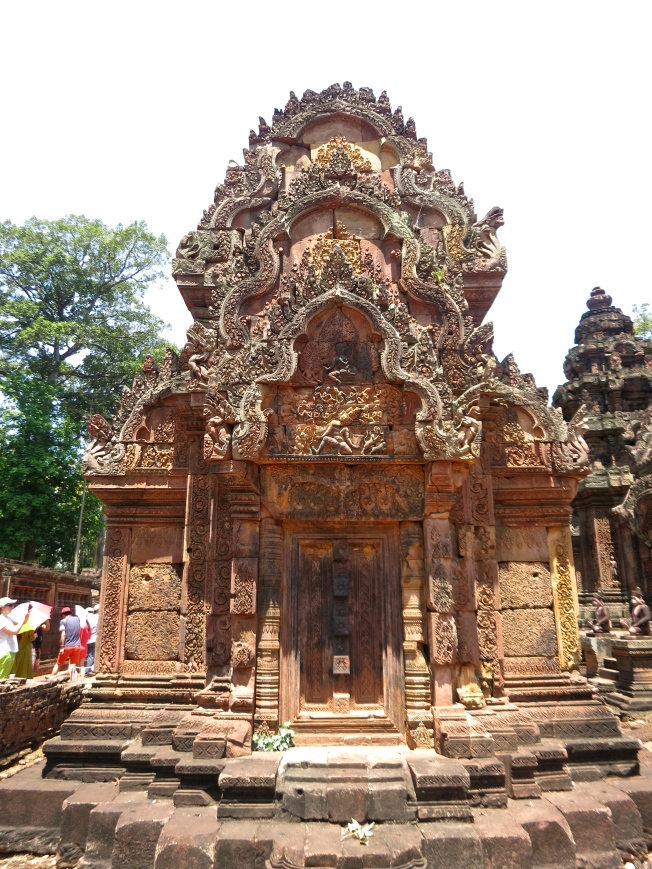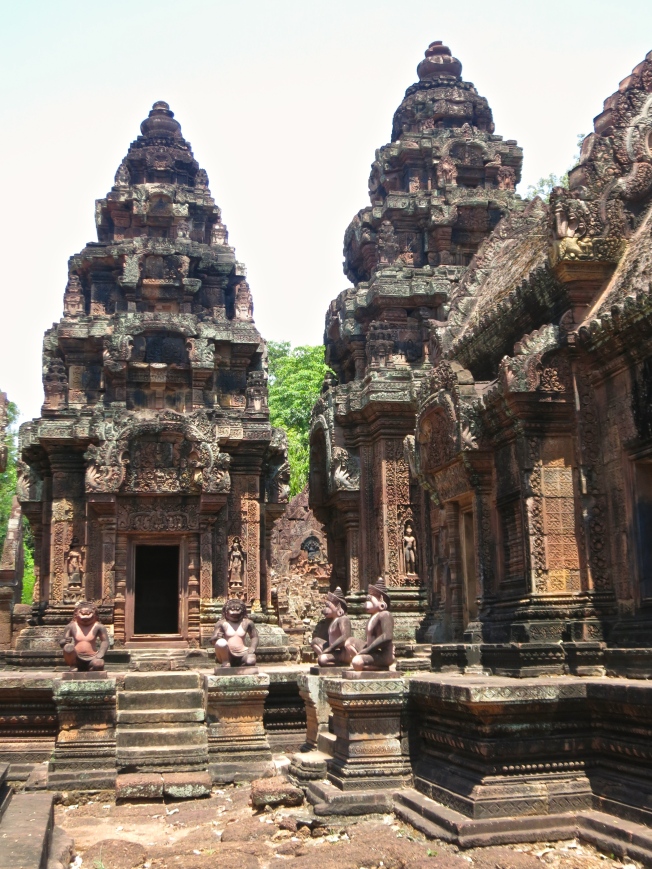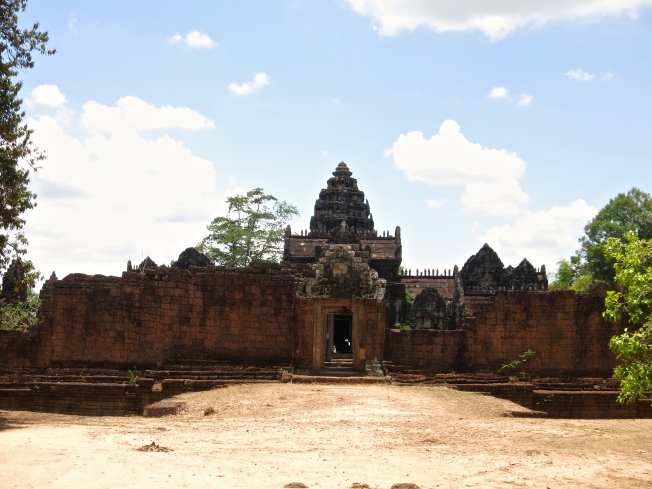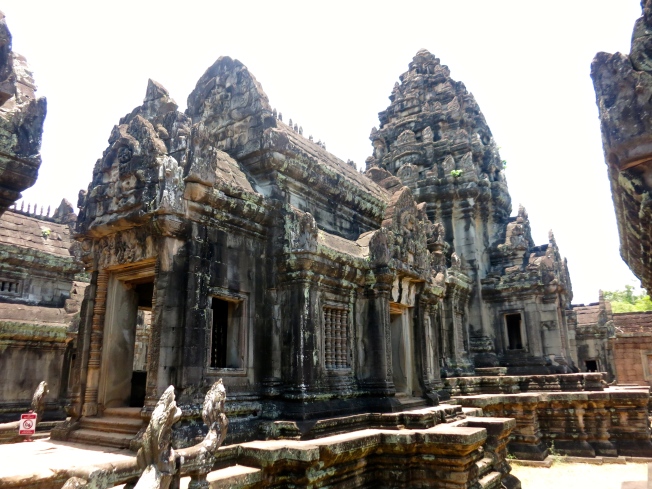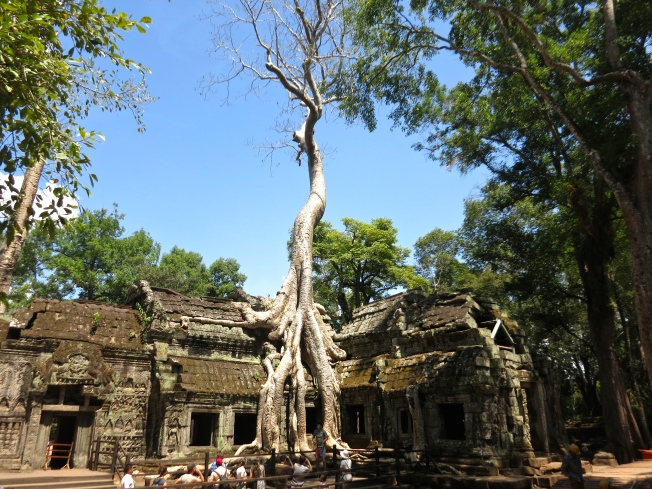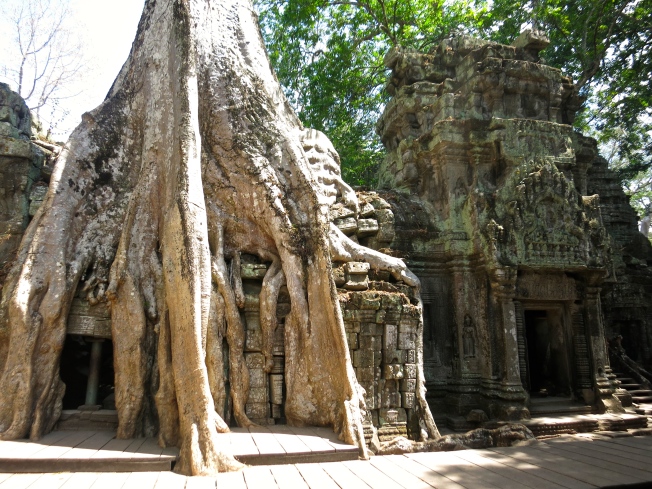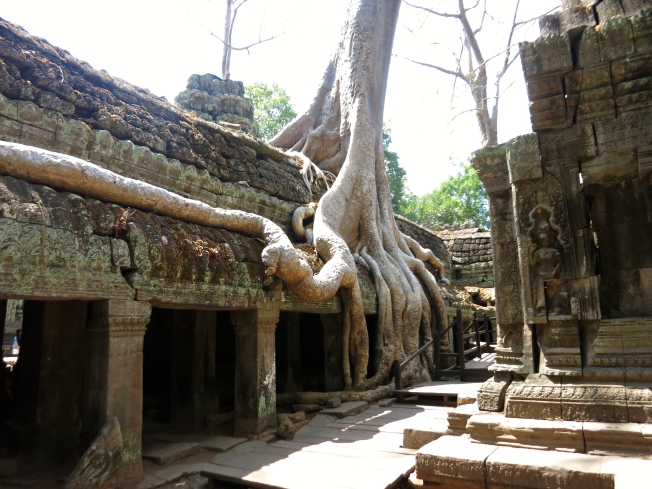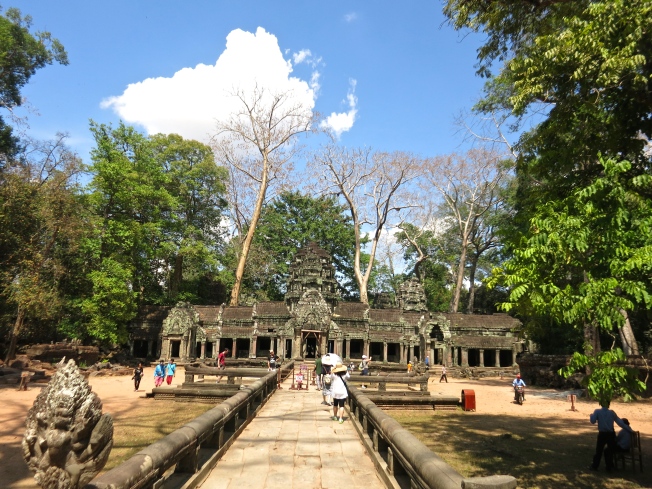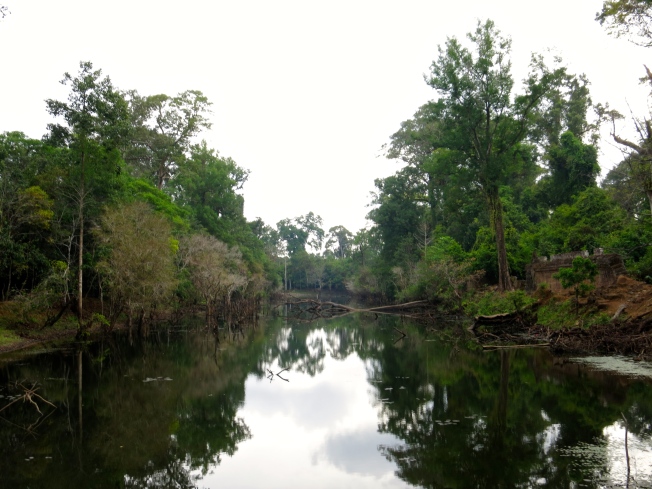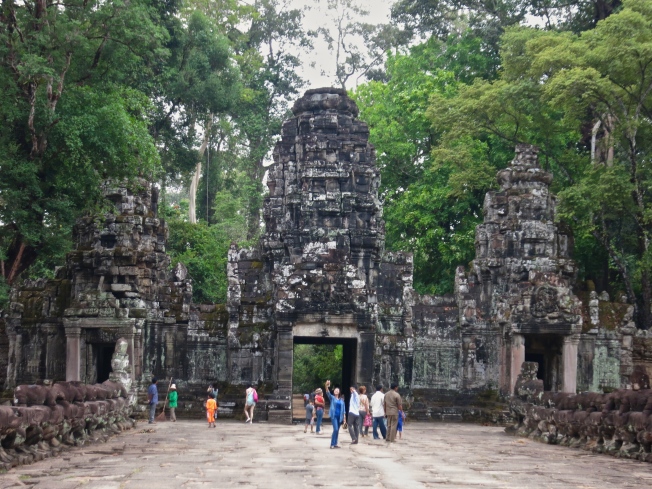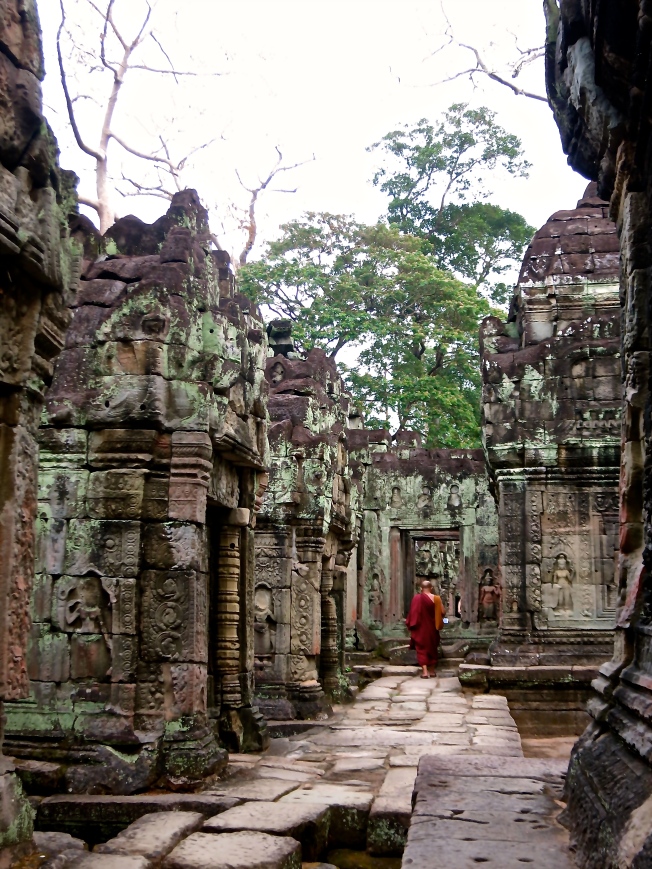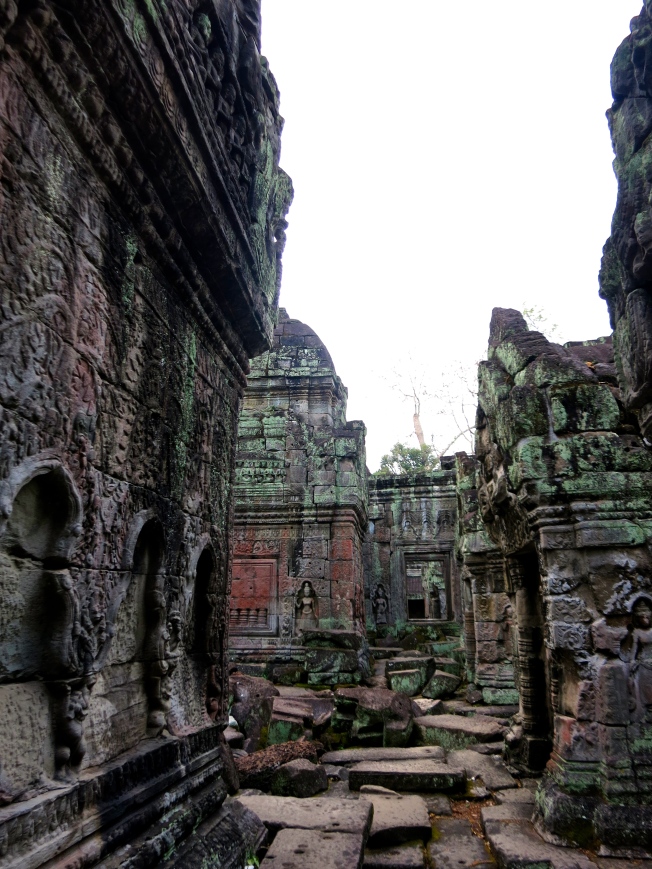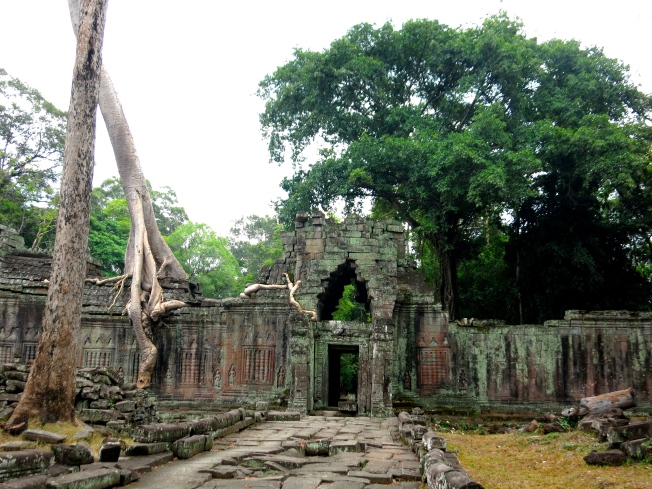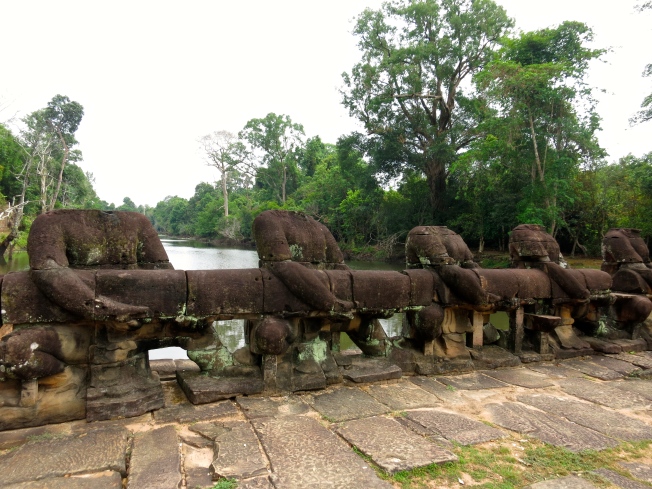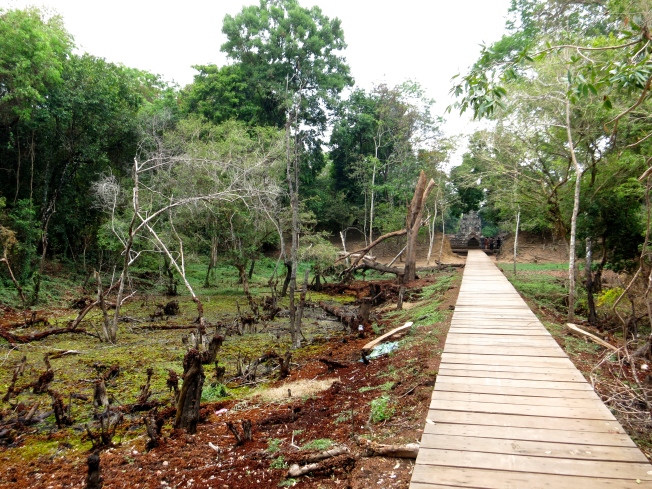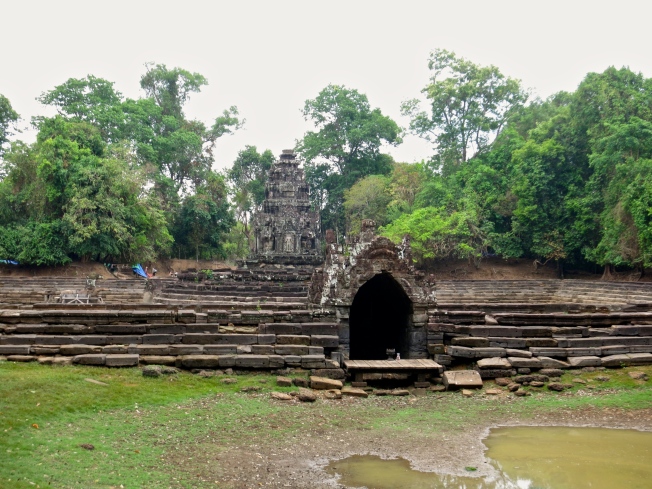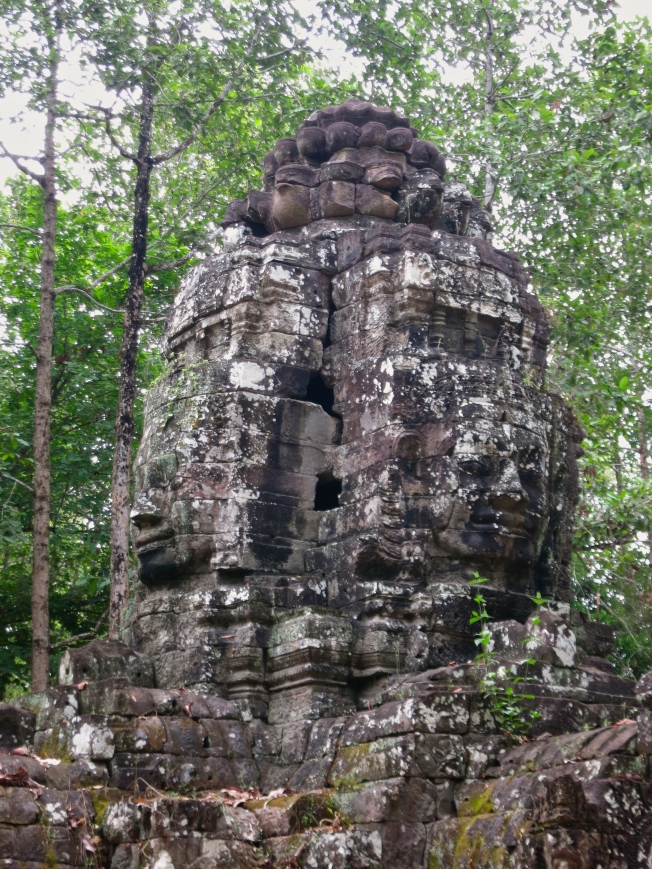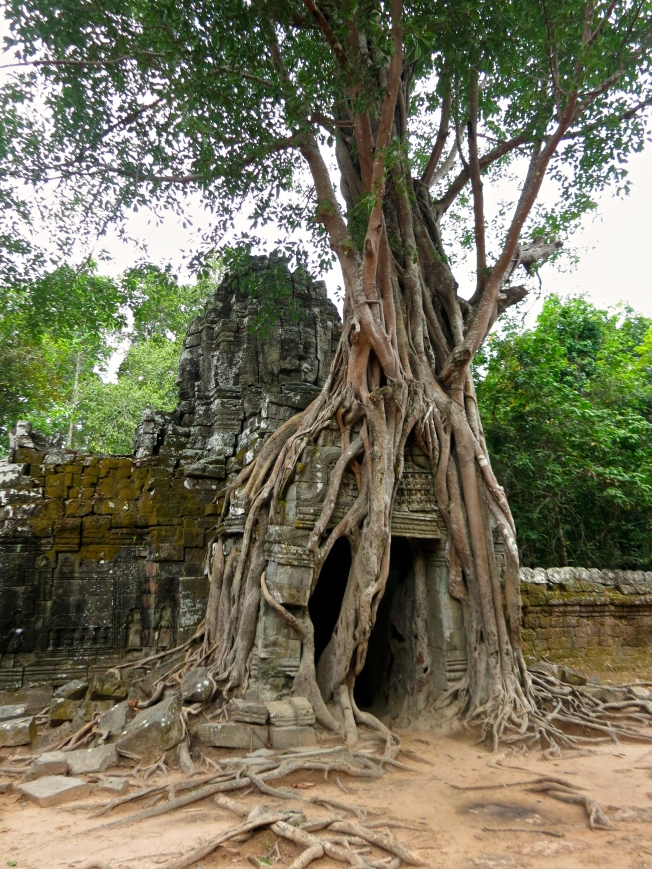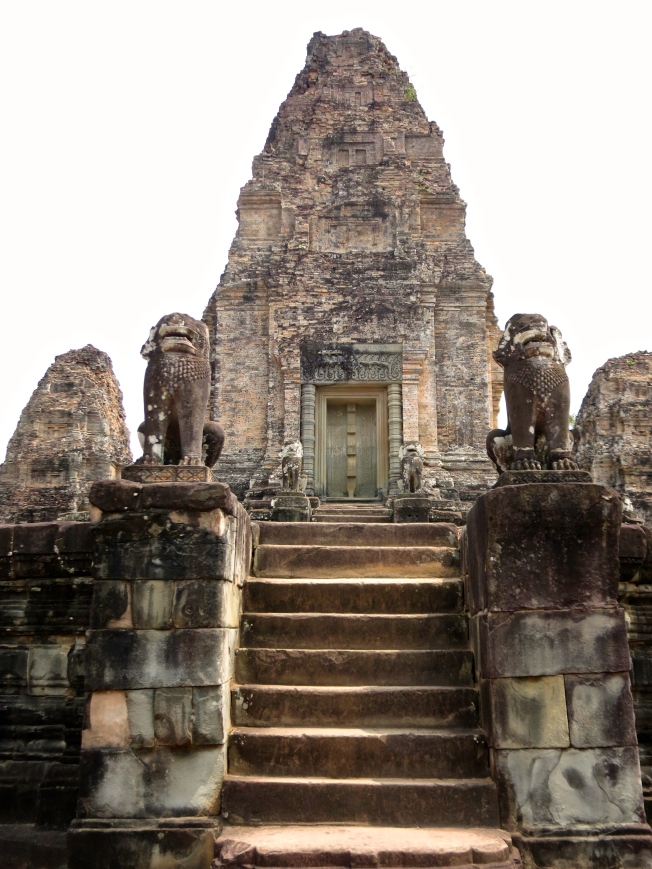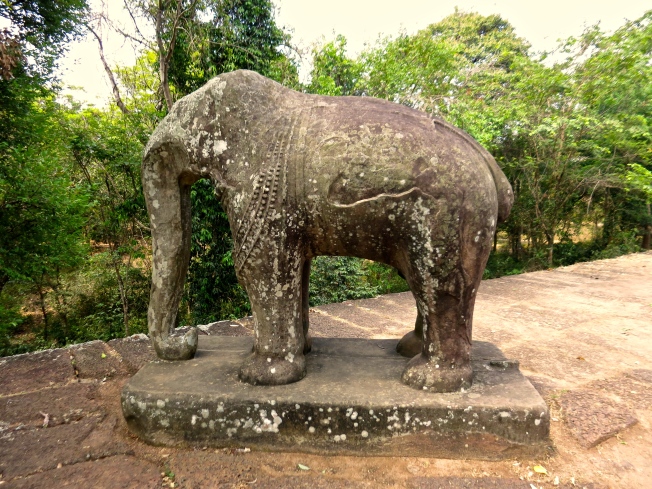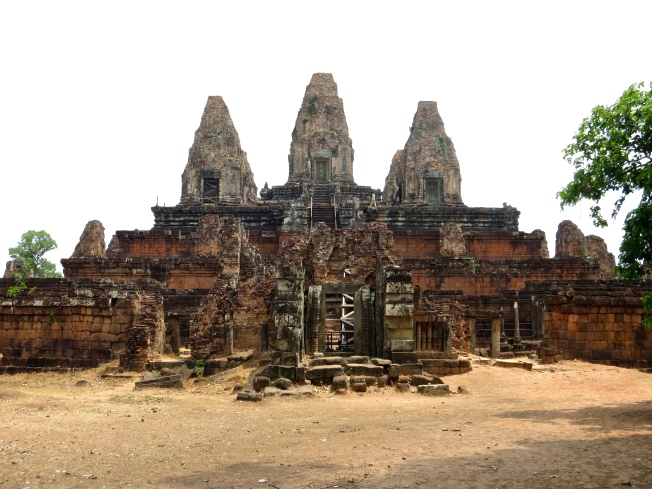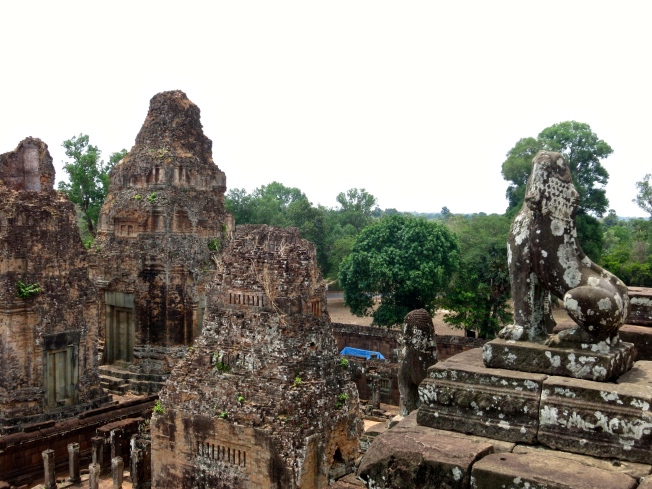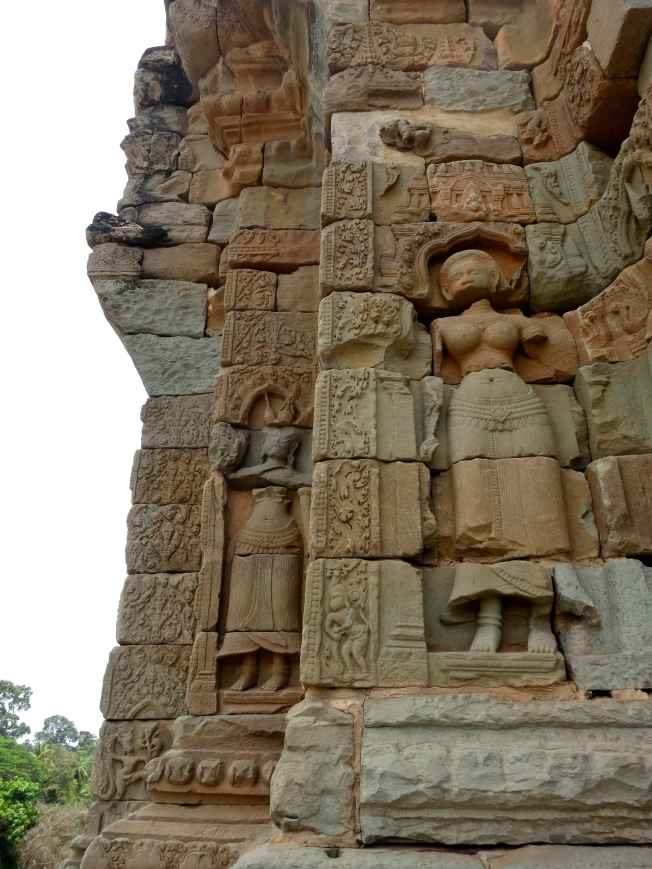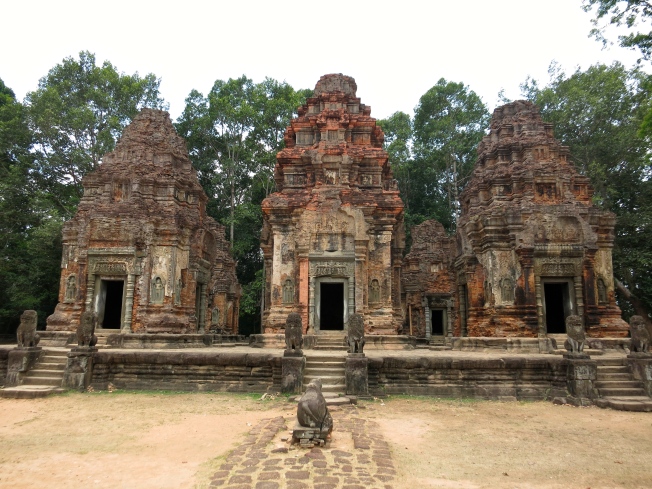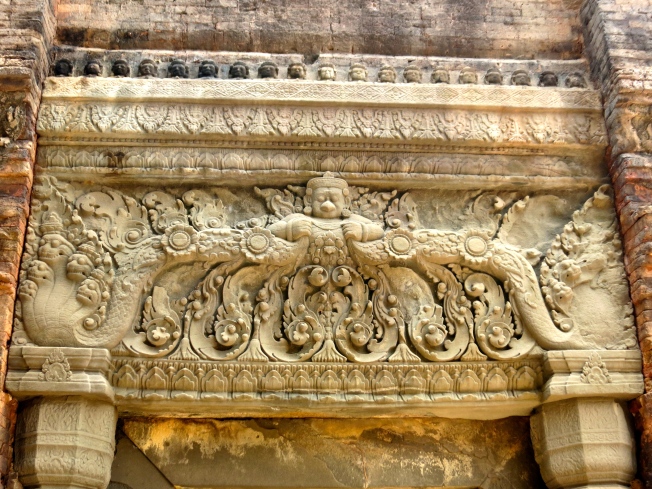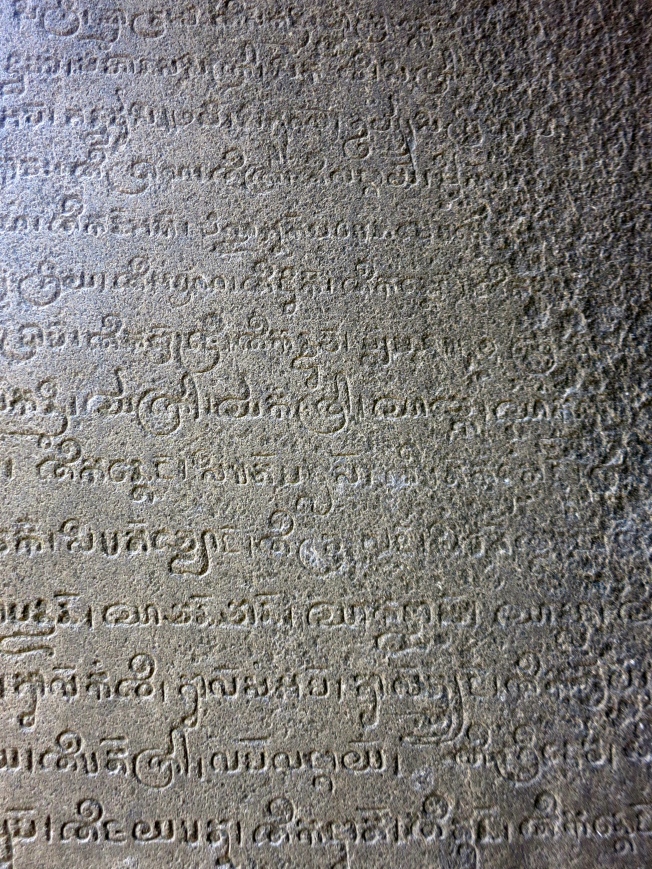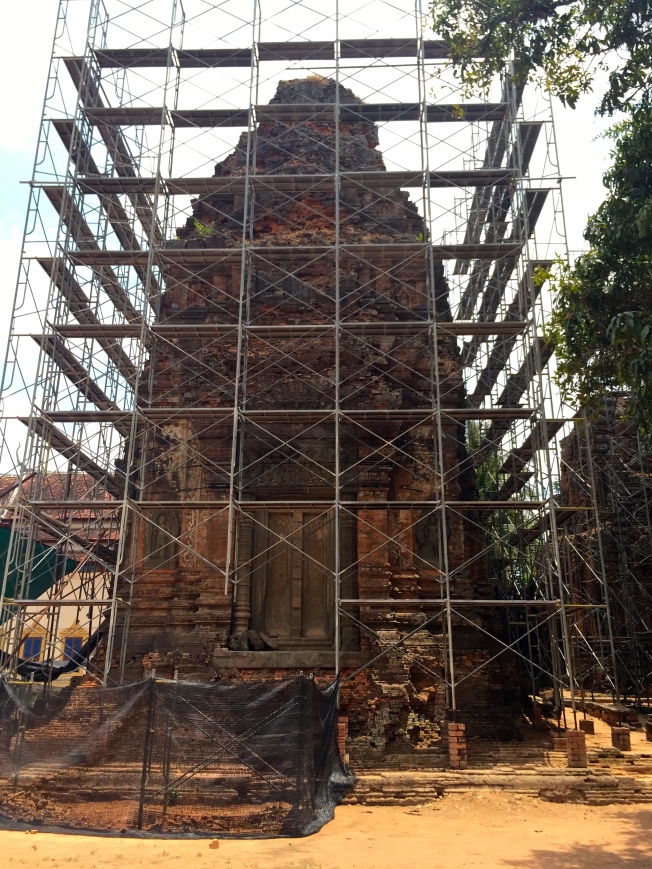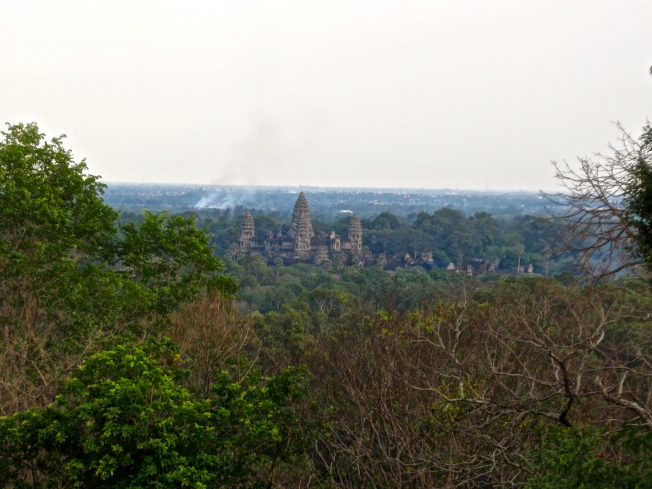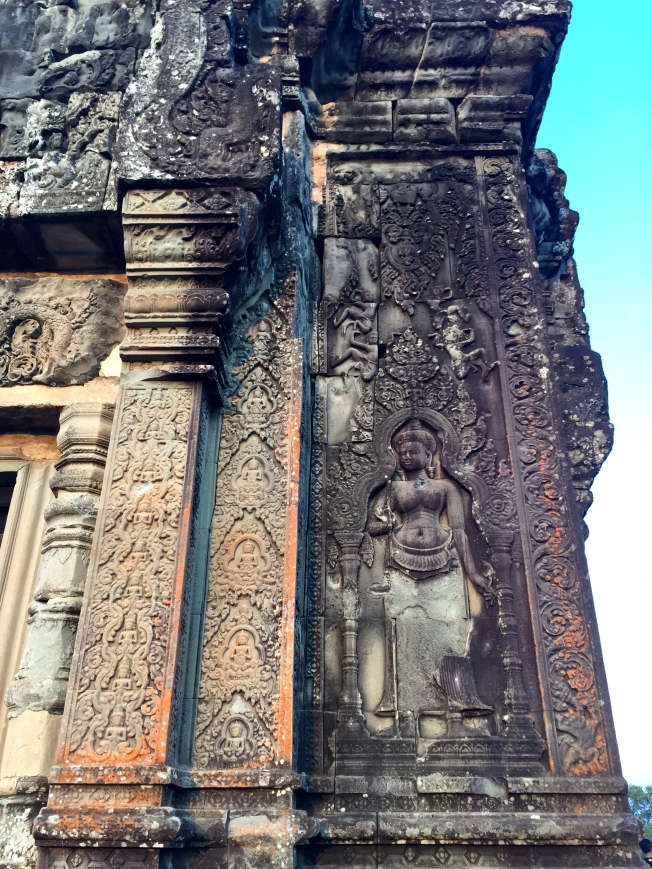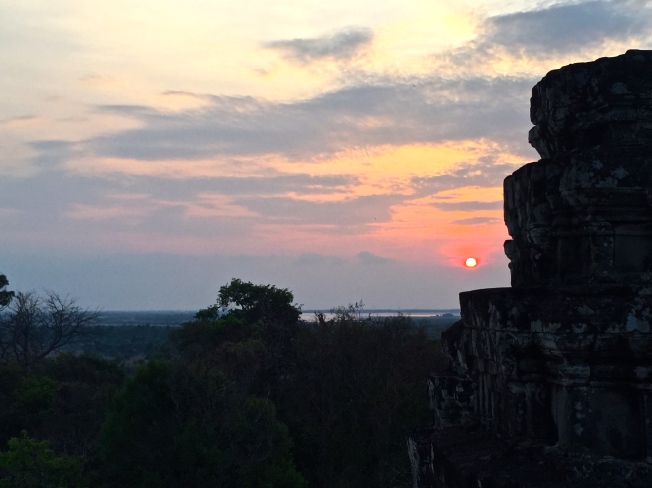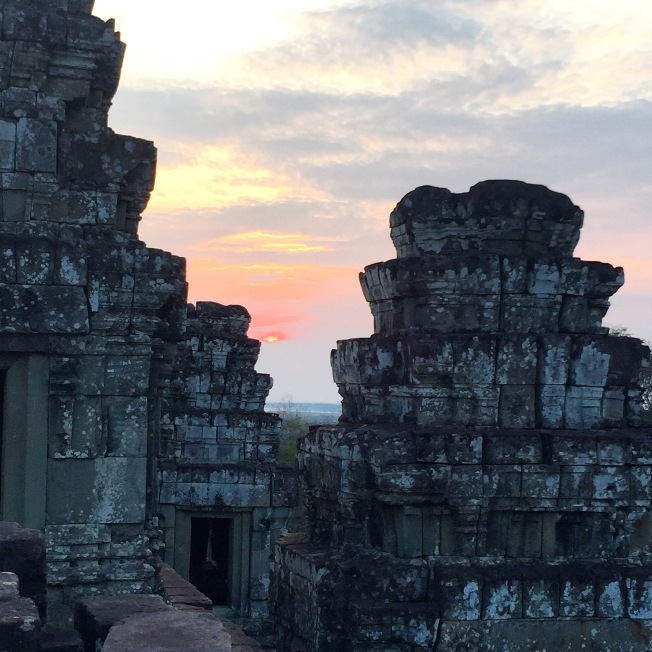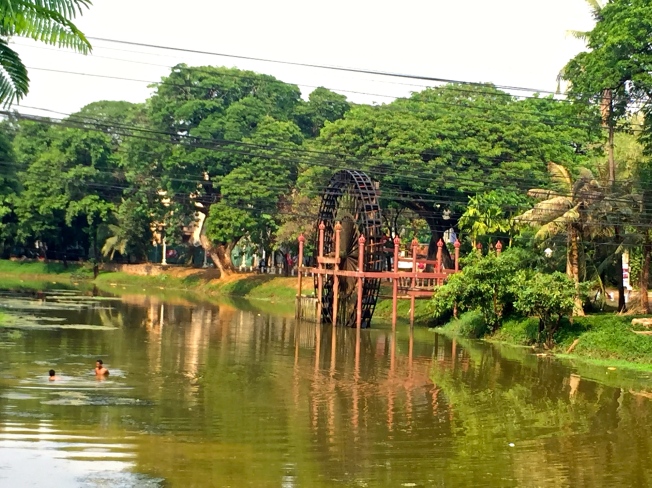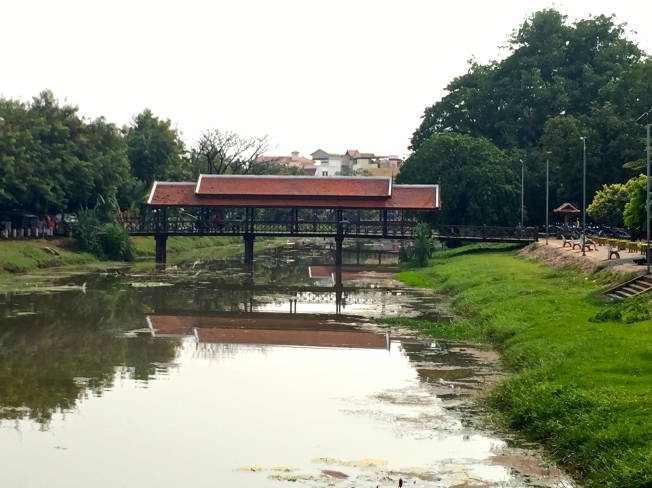Today I saw the sun rise over Angkor Wat. I had been working towards this moment for 2 days. It was tough getting up so early. Mr Lai picked me up at my hotel at 5am. It was very dark out and it had been raining most of the night. By the time we arrived at Angkor Wat, the rain had stopped and the clouds were beginning to part. I walked through the west gate into the complex and could begin to see a massive shadow rising up through the darkness–the peaks of the temple towers ascending to the sky. I found a little spot by one of the pools and waited. It didn’t take long for nature to do its thing, and the first sun rays to light up the sky with lavenders and pinks.
Once the sun rose higher in the sky, I made my way into the temple. Some basic information on Angkor Wat: This is the largest religious building in the world. Built in the 12th century by Khmer King Suryavarman II, this temple-mountain was first a Hindu temple and then later a Buddhist temple. Angkor Wat has become a symbol of Cambodia and even appears on the Cambodian national flag. I’ll leave off there–you can look up the rest.
I didn’t walk up the towers at Angkor Wat. Apparently it was the “Buddha’s day” today and the upper level of the towers was closed off to visitors. Well, almost. A guard said that if I gave him $5 USD he’d let me up. I had had enough steep steps on this trip and decided I didn’t need to break any rules for a better view.
This meant I had more time to spend looking at the carvings on the walls. Angkor Wat has some splendid high relief carvings along all the gallery walls.
I walked all over the interior of the temple, and then decided to walk toward the moat around the complex for a different view.
I walked around the complex some more and then headed back to the east side of the island to meet Mr Lai.
I spent about two and a half hours walking around the complex and taking it in this morning. At 8am I went to find Mr Lai, who promptly returned me to my hotel where I took a long nap.
In the afternoon, Mr Lai picked me up at 3pm to take me to Tonle Sap Lake. He drove me to a river near the lake and then we took a boat to see a floating village on the lake. Tonle Sap is the largest freshwater lake in South East Asia. It is an unusual ecosystem for two reasons: first its flow changes direction twice a year, and second the water level of the lake changes dramatically between the dry and rainy seasons. It’s the dry season right now, so the water level is incredibly low. Our boat, as well as other tourist boats, proceeded in a very tight single file through the middle of the river in order to get to the lake. Any deviation from the middle and the boats would get stuck–that’s how low the water level is at this stage.
I think the floating village I visited is called Chong Kneas, although I’m not positive. It was a quick tour. The boat took us past a community market, a school, a church, and we docked at souvenir market/restaurant/crocodile farm so we could take photos from the second and third levels where there was a better view of the village.
As the name states, the floating village is, well, exactly that. All the houses are either on boats or floating docks of some sort. I believe the villagers move around the lake depending on the season. They have restaurants and markets and schools and hospitals and police stations and everything…except it’s all on the lake. It’s interesting to see. I’m not sure it was worth the $25 ticket for the hour long boat ride. Maybe in the rainy season it’s more interesting and there is also the option to visit the flooded forest (which isn’t flooded right now, obviously).
To the right of the market you’ll notice a fan of tree branches coming out of the water. These are the anchors that the villagers build and use for each of the floating structures. This one is the anchor for the community market.
The floating village was interesting; a true water world in its own right.
Scam Alert: I head read numerous reviews on Trip Advisor and other sites about scams on Tonle Sap Lake. The guys driving the tour boats will dock at the community market and guilt the passengers into buying expensive bags of rice for the children at the school. According to these sources, this is a scam to squeeze money out of tourists. My boat driver suggested stopping at the community market, to which I promptly said no. It bothered me that at the one stop we did make (the souvenir/restaurant/crocodile farm — literally, it was all three of those things) the boat driver was also pushing me to buy souvenirs for which I had no need. It wasn’t a great experience. Seeing the floating village was alright but certainly not a highlight of this trip by any means.
Overall this has been a fairly pleasant though exhausting few days here in Siem Reap. I think I tried to do a little too much in terms of temple visits. There was one temple I wanted to see, which I missed (Kbal Spean) because it was quite a bit far. Otherwise I saw everything I set out to see, and I think I’m all set on visiting temples for awhile (well, until I get back to Bangkok next week).
I’d like to make a few restaurant recommendations here in Siem Reap. I met a couple of well-heeled travelers over lunch a few days ago, who gave me some terrific dinner recommendations. I went to all three that they listed for me: Viroth, Square 24, and Nest. They were terrific. Very trendy and cool ambiance and decor, with great food. I splurged tonight at Nest and had a $30 meal–the most expensive meal I’ve had on this trip by far, but that was because I opted to have the Western dishes on the menu which are pricier (I really needed a night off from curry, rice, and stir fry).
Tomorrow I fly back to Bangkok, where I round off my trip with a few days on the beach. In the end I’ve decided to go to Koh Samui (instead of Phuket).
